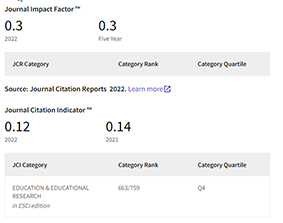Studies on the History of Special Education in Italy: State of the Art and Paths for Future Research
DOI:
https://doi.org/10.14516/ete.2016.003.001.12Parole chiave:
history of special education, Italy, state of the art, future researchesAbstract
The history of special education in Italy is a highly recent field of study. Prior to this, the theme had only been treated in a small number of publications that were limited in scope, primarily hagiografic and journalistic in style, and whose authors themselves worked in special education. In 1993, the article by Roberto Sani, devoted to Severino Fabriani, educator of female deaf mutes in Restoration Modena, marked the beginning of a history of special education that was researched using an interdisciplinary approach and situated within the broader framework of social and political history, and the history of institutions and cultural processes. Following in the line of enquiry into the history of special education inaugurated by Sani, further studies have been published since the beginning of the new millennium, by both established historians of education and young scholars joining the field. Some of these authors have maintained a focus on the world of education for the deaf; others have extended this model of interpretation to related field (educational institutions for children affected by rickets and by blindness). What avenues of research remain open to those wishing to pursue the history of special education? Numerous are the aspects still awaiting systematic investigation. It might therefore be to investigate the educational models and school programs offered over time for persons with disabilities affecting more than one sense (e.g., those who are both deaf and blind).
Riferimenti bibliografici
Bocci, F. (2011). Una mirabile avventura: storia dell’educazione dei disabili da Jean Itard a Giovanni Bollea. Firenze: Le lettere.
Debè, A. (2014). «Fatti per arte parlanti». Don Giulio Tarra e l’educazione dei sordomuti nella seconda metà dell’Ottocento. Milano: Educatt.
Ferreri, G. (1889). L’otologia e la scuola dei sordomuti. Siena: Tip. Arciv. S. Bernardino.
Morandini, M. C. (2010). La conquista della parola, Torino: SEI.
Morandini, M. C. (2010). I manuali per l’educazione dei sordomuti: i testi di lingua e di istruzione religiosa. In Bianchini, P. (Ed.), Le origini delle materie. Discipline, programmi e manuali scolastici in Italia (pp. 139-165). Torino: SEI.
Morandini, M. C. (2012). Tra educazione e assistenza: la scuola speciale per i ragazzi rachitici di Torino, in History of education & children’s literature, VII(2), 241-257.
Morandini, M. C. (2013). Torino benefica: l’istituto per l’educazione dei ciechi, in History of education & children’s literature, VIII(1), 657-671.
Morandini, M. C. (2015). L’educazione dei sordomuti: un significativo contributo alla storia della pedagogia speciale. In Ulivieri, S., Cantatore, L., & Ugolini F. (Eds.), La mia pedagogia. Atti della prima Summer School SIPED (pp. 125-132). Pisa: Edizioni ETS.
Polenghi, S. (2005-2006). Gaetano Pini e il Pio Istituto dei rachitici di Milano. Archivio storico lombardo, IX, 265-306.
Polenghi, S. (2009). Educating the cripples: the Pious institute for rickets sufferers of Milan and its transformations (1874-1937). Macerata: EUM.
Sani, R. (1993). Severino Fabriani educatore delle sordomute nella Modena della Restaurazione. Pedagogia e vita, LI(3), 52-82.
Sani, R. (2000). Istituzioni scolastiche e didattica speciale nell’Italia dell’Ottocento: le scuole per i sordomuti. In Bellatalla, L. (Ed.), Maestri, didattica e dirigenza nell’Italia dell’Ottocento (pp. 283-305). Ferrara: Tecomprojet.
Sani, R. (2008). L’educazione dei sordomuti nell’Italia dell’800. Istituzioni, metodi, proposte formative. Torino: SEI.
Scuri, D. (1932). Alcune considerazioni sul metodo educativo e rieducativo auricolare nei sordomuti. Siena: Scuola Tipografica Sordomuti.
Scuri, D. (1954). Nuovi orientamenti della scuola moderna pei sordomuti. Roma: Scuole culturali e professionali dell’Ente nazionale sordomuti.







